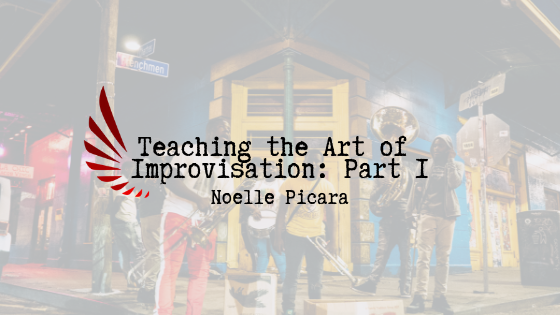Teachers are all great improvisers, but they might not realize it if they haven’t been awarded the opportunity to study improvisation. While improvisation can be applied to every walk of life, it is especially important in education. In a field where reactions are crucial, collaboration is evident, and flexibility is necessary, the art of improvisation is a teacher’s best friend.
There are a few characteristics inherent to improvisational arts. First, there is a structure. This structure is passed down from teachers and great innovators in the field. Once you have learned this structure, you must keep practicing until you internalize it, almost as if it is second nature, like breathing or walking. This set of tools (the structure) gives you a framework to rest in. The structure acts as a common language to interact with other improvisers – even total strangers – and allows you to create something together. While everyone knows this structure so they can communicate the same language, what each person in the collaboration brings to the table is unique.
These distinctions lend themselves to creating a unique expression in the moment. The more you’ve practiced, and the more tools you have in your toolbox, the more versatility you have to express and work with what’s happening around you.
In Jazz, the structure is often the standards. Some might ask, why would you keep referencing the same music – isn’t that repetitive? Within the standards, everyone knows the chords and notes that are available. You learn the standards because it creates a platform to jump from, a common language to manipulate. In jazz improvisation, you play the tune and each person gets a chance to solo. There will be a chance for everyone to act as a support person and to act as the featured person. This interaction requires a level of interpersonal dynamics because you must listen and respond to each other.
In circle songs, developed by Bobby McFerrin, a new song is created every time, and there are no standards. However, there is still an inherent structure; it’s just more flexible to allow for different styles of music, levels of musicianship, and cultural representations. When singers create a circle song, they bring their own history, culture, and individual knowledge to the circle. They also have to be willing to step into the fear of the silence, into the unknown. Just like in jazz music, or in any kind of ensemble, there’s a balance of the collective and the individual.
From my background as a musician, teaching is exactly like improv. The best teaching moments come when you know your subject well enough and the class has internalized a rhythm and structure, so that once you step into the classroom, the teacher can be comfortable with guiding students through the unknown. Things are happening all around you, and most of the time a teacher will encounter the unexpected on a regular basis. Out of these interactions, teachers get very good at understanding social dynamics and at creating something new out of the unexpected.
Often people equate improvisation with making things up on the fly. They don’t realize the practice, background, learning, or understanding of common language that goes along with it. Not only must you practice these aspects, but you also have to be dedicated. You can only respond in a useful, profound, and engaging way with the student if you have planned and rehearsed your structure a lot. Reimagining the structure you’ve learned so you can react well to challenges becomes second nature – a part of you where you express yourself through that and react to your surroundings.
Because teachers are natural improvisers, they have a lot to learn from the active study of improv. All teachers, of any skill level, could enjoy and draw upon the skills of accessible forms of improv like Circle Songs, 5 Rhythms dance, and improv theatre. Teachers create together, learn together, and mold the minds of young children. They are creating the future of young human beings and impacting the way they will operate in the world. By virtue of that, they are co-creating a new society, a new way of life, and impacting change.

